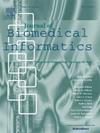PregAN-NET: Addressing Class Imbalance with GANs in Interpretable Computational Framework for Predicting Safety Profile of Drugs Considering Adverse Reactions During Pregnancy
IF 4.5
2区 医学
Q2 COMPUTER SCIENCE, INTERDISCIPLINARY APPLICATIONS
引用次数: 0
Abstract
Adverse Drug Reactions (ADRs) during pregnancy pose significant risks to both the mother and the fetus. Conventional approaches to predict ADR are inadequate due to ethical restrictions that prevent performing medication studies in pregnant women, leading to restricted data samples. Hence, computational techniques have been promising for ADR predictions. However, most of these techniques have focused on the general population and face the challenge of class imbalance and lack of model interpretability. In the present work, an ensemble learning-based PregAN-NET framework has been proposed that addresses the issue of class imbalance by generating synthetic data employing Conditional Tabular Generative Adversarial Network (CTGAN) and integrates neural network and gradient boosting as a Boosted Neural Ensemble (BNE) architecture to predict safe and unsafe drugs considering their adverse reactions during pregnancy. Furthermore, the SHAP method has been employed to enhance the post-hoc interpretability of the BNE architecture by analyzing the contribution of different features towards prediction. The proposed framework has been applied to chemical and biological properties from PubChem and DrugBank, along with class labels from the ADReCS database. CTGAN has been evaluated for data balancing, showing a 2% to 5% performance improvement over SMOTE. The BNE architecture has outperformed six state-of-the-art methods by achieving mean ROC-AUC scores between 77.00% and 90.00% for chemical data, 66.00% and 74.00% for biological data, and 70.00% to 75.00% for combined datasets. Further, the top 20 contributory features in prediction corresponding to the different drug properties have been identified.

PregAN-NET:在可解释的计算框架中解决gan的类不平衡,以预测怀孕期间考虑不良反应的药物安全性
妊娠期间的药物不良反应(adr)对母亲和胎儿都构成重大风险。由于伦理限制,无法对孕妇进行药物研究,导致数据样本有限,因此预测不良反应的传统方法是不够的。因此,计算技术对ADR的预测很有希望。然而,这些技术大多集中在一般人群上,面临着阶级不平衡和缺乏模型可解释性的挑战。在目前的工作中,提出了一个基于集成学习的PregAN-NET框架,该框架通过使用条件表格生成对抗网络(CTGAN)生成合成数据来解决类别失衡问题,并将神经网络和梯度增强集成为增强神经集成(BNE)架构,以考虑其在怀孕期间的不良反应来预测安全和不安全的药物。此外,通过分析不同特征对预测的贡献,采用SHAP方法增强了BNE架构的事后可解释性。提出的框架已应用于PubChem和DrugBank的化学和生物特性,以及ADReCS数据库中的类标签。已经对CTGAN进行了数据平衡评估,显示其性能比SMOTE提高了2%到5%。BNE架构优于六种最先进的方法,化学数据的平均ROC-AUC得分在77.00%到90.00%之间,生物数据的平均ROC-AUC得分在66.00%到74.00%之间,组合数据集的平均ROC-AUC得分在70.00%到75.00%之间。此外,还确定了预测中与不同药物性质相对应的前20个贡献特征。
本文章由计算机程序翻译,如有差异,请以英文原文为准。
求助全文
约1分钟内获得全文
求助全文
来源期刊

Journal of Biomedical Informatics
医学-计算机:跨学科应用
CiteScore
8.90
自引率
6.70%
发文量
243
审稿时长
32 days
期刊介绍:
The Journal of Biomedical Informatics reflects a commitment to high-quality original research papers, reviews, and commentaries in the area of biomedical informatics methodology. Although we publish articles motivated by applications in the biomedical sciences (for example, clinical medicine, health care, population health, and translational bioinformatics), the journal emphasizes reports of new methodologies and techniques that have general applicability and that form the basis for the evolving science of biomedical informatics. Articles on medical devices; evaluations of implemented systems (including clinical trials of information technologies); or papers that provide insight into a biological process, a specific disease, or treatment options would generally be more suitable for publication in other venues. Papers on applications of signal processing and image analysis are often more suitable for biomedical engineering journals or other informatics journals, although we do publish papers that emphasize the information management and knowledge representation/modeling issues that arise in the storage and use of biological signals and images. System descriptions are welcome if they illustrate and substantiate the underlying methodology that is the principal focus of the report and an effort is made to address the generalizability and/or range of application of that methodology. Note also that, given the international nature of JBI, papers that deal with specific languages other than English, or with country-specific health systems or approaches, are acceptable for JBI only if they offer generalizable lessons that are relevant to the broad JBI readership, regardless of their country, language, culture, or health system.
 求助内容:
求助内容: 应助结果提醒方式:
应助结果提醒方式:


